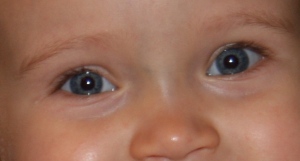Do you believe that your kids/teens do not drink or use drugs only other kids do?
My kids are older now but at times when they were in High School and even Jr. High this thought went through my head.
I kind of believed that they were drinking but substance abuse… I could not entertain that in my head.
They told me that cocaine and marijuana were readily available. Some students were actually “high” while sitting in the classroom at any given time of the school day.
Now, what I failed to take into account was this: kids may tell you some truths but they usually underestimate what is actually the case and of course they do not implicate themselves. They tell you, the parent, just enough to satisfy your curiosity. This may give the parents a false sense of security about their involvement in the drinking and drug scene and it makes you stop asking questions.
During those high school years I had friends that were telling me that their children were not having sex and that they were also not smoking or drinking. I wonder if they saw my ears twitching when I was listening to their words.
I also knew parents that were hosting parties in their homes where under age drinking was allowed ….car keys were collected and no one left if they were indeed drinking.These parents thought that they were doing a good thing, at least the drinking was supervised. YIKES!
Some parents dangerously believed that their children were not drinking and driving which was not necessarily the case. They simply closed their eyes to the fact… drinking was routine and happened every single weekend without fail.
Our high school even exacted a pledge from its athletes. “Athletes would not drink or use drugs”.
The High School had no way of following up on whether these athletes were actually adhering to the “pledge”. So in my eyes the pledge was a farce which the students recognized as well. Students had to be caught by the police drinking or with drugs to actually be in violation of the high school’s Athletic Code.
All of these machinations were simply ridiculous in my eyes because the teenagers knew that they could cross the lines and never get caught.
The Athletic Code and Pledge made the school feel good about itself and the parents were duped into believing that if their child was an “athlete” they were not drinking or “using”.
High schools and colleges do not want the reputation of having a drinking or drug problem among their students so they use pledges without any punch to them.
We want to believe that this helps but…DOES IT?
If schools were to recognize the depth of these issues the school district might lose face and so would the value of living in a particular community. Then there is the domino effect leading eventually to a drop in home values based upon a school district problems. End of rant....
My advice:
- Read the suggestions printed below.
- Maintain an open conversation with your teens and pre-teens.
- Do not think that it could not affect your child or your family.
- Try to talk honestly about drinking and substance use.
- Tell your children what you know about alcohol and its effects.
- If you drink let them see that you drink responsibly.
- Never drink and drive yourself.
- Above all be honest with yourself and your kids…they can see right through you if you are not.
- Never say “do as I say not as I do”.
Good luck…parenting is hard…you are not your child’s friend…so know when to be firm and discipline when you need to do so.
Parents of teens likely underestimate own teens’ substance use, while overestimating marijuana and alcohol use by teens nationally
ANN ARBOR, Mich. – The latest C.S. Mott Children’s Hospital National Poll on Children’s Health from the University of Michigan finds that few parents (10 percent) believe their own teens, ages 13 to 17 years old, have used alcohol in the last year and even fewer (5 percent) believe their own teens have used marijuana in the last year.
Those levels are substantially below what teens themselves reported in the latest Monitoring the Future study, where 52 percent of 10th graders reported drinking alcohol in the last year and 28 percent of 10th graders reported using marijuana in the last year.
What can parents do about teen substance use?
Biermann suggests:
1. Talk to your teenager about substance use in a non-threatening way.
2. Carefully monitor teens when they come home and look for signs of substance use.
3. Try not to overreact to a single instance of substance use. Instead, use the opportunity to talk to your teen in a non-judgmental way and be available as a resource for resisting peer pressure.
4. Talk with your teen’s friends and talk with other parents. Sometimes others will share information that your own child won’t.
5. Read information from resources such as the National Institute on Drug Abuse (NIDA) to become educated about common signs and symptoms of substance abuse.Full report: http://www.med.umich.edu/mott/npch/pdf/091211substanceuse.pdf
C.S. Mott Children’s Hospital National Poll on Children’s Health:
Website: www.med.umich.edu/mott/npch
Facebook: http://www.facebook.com/mottnpch
Twitter: @MottNPCH
Additional resources include:
Partnership for a Drug-Free America: http://www.drugfree.org/
University of Michigan Health Library—Teen Alcohol and Drug Abuse:http://www.uofmhealth.org/health-library/tp17749#tp17750


